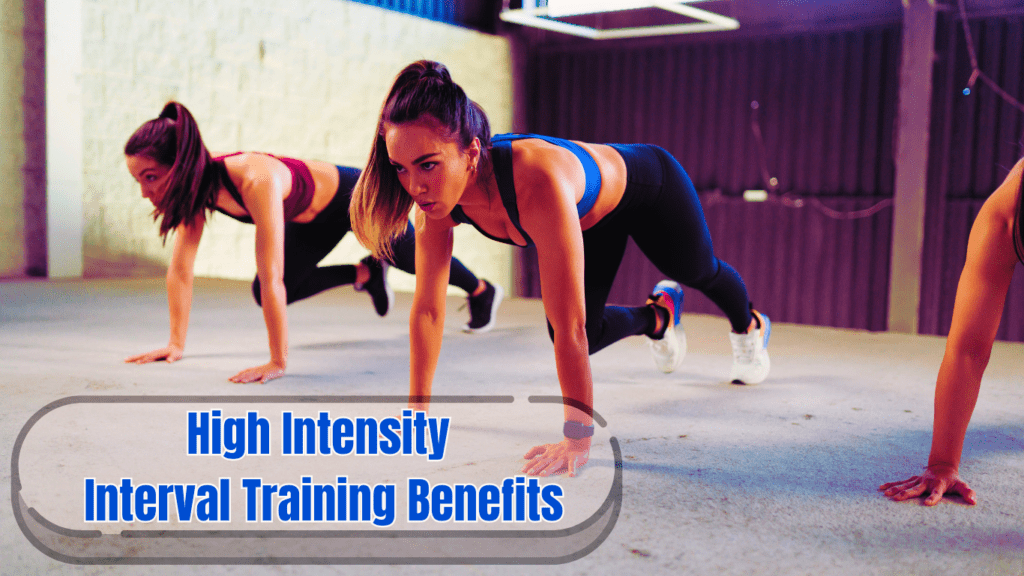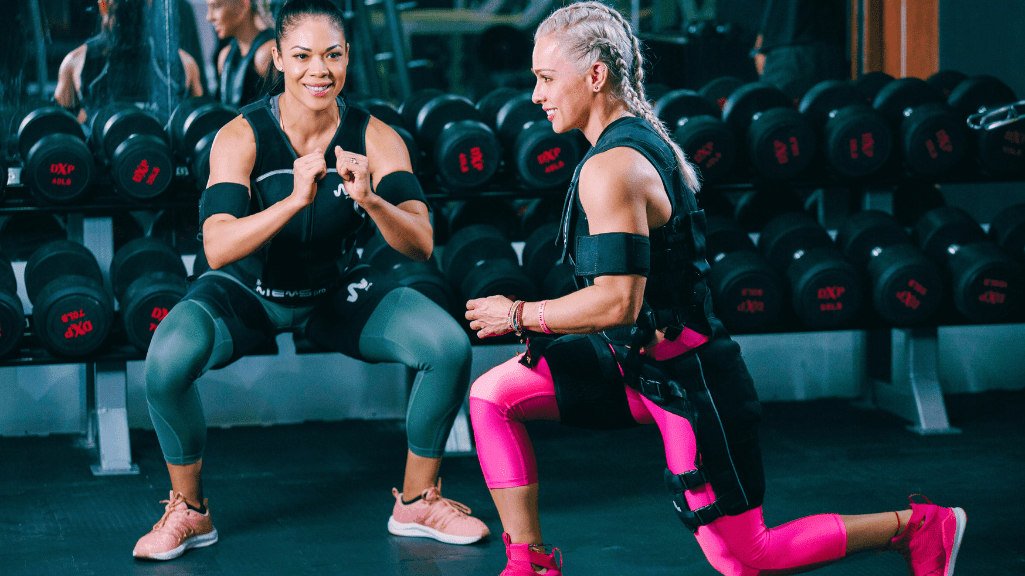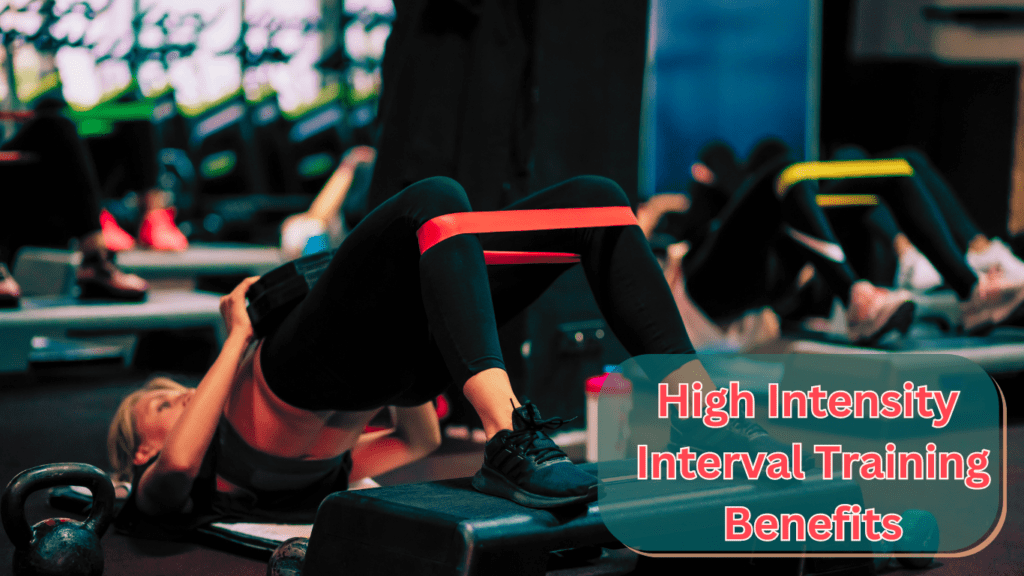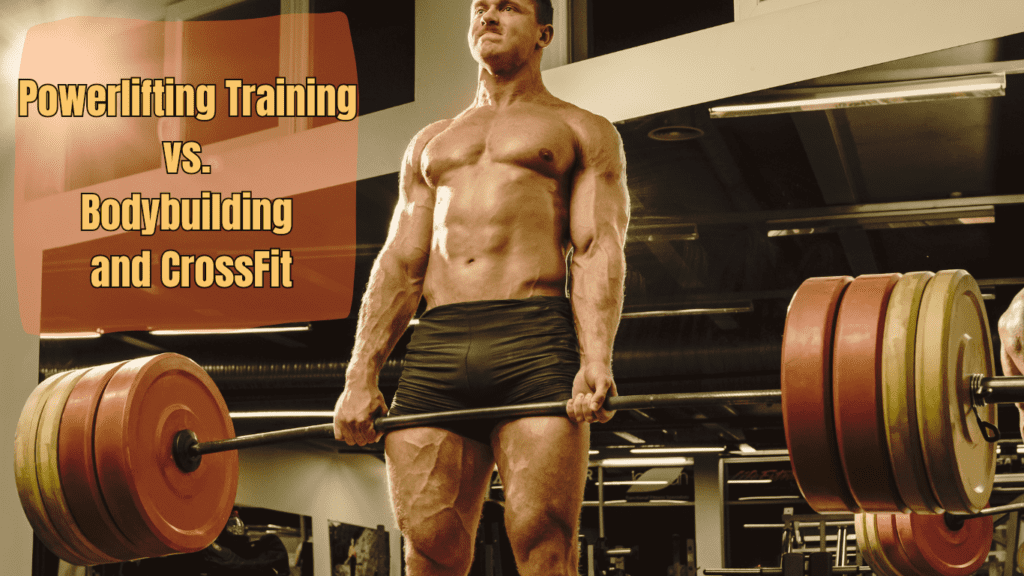High Intensity Interval Training Benefits: Why HIIT is Revolutionising Fitness
In this article, we will dive deep into the High Intensity Interval Training benefits, exploring how this powerful workout method not only saves you time but also delivers superior results in terms of fat loss, muscle preservation, cardiovascular health, and overall fitness, making it the ideal choice for anyone looking to maximise their fitness potential.
Did you know that 15 minutes of High Intensity Interval Training burns more calories than jogging for an hour? This fact alone shows why HIIT has become one of the most popular workout methods worldwide. By packing a lot of intensity into a short time, HIIT provides a highly effective, time-efficient way to achieve fitness goals, whether you’re looking to burn fat, boost stamina, or improve overall health.

What is High Intensity Interval Training?
High Intensity Interval Training (HIIT) is a workout format that alternates between short bursts of high-intensity effort and recovery periods of low intensity or rest. It could look like this:
- 30 seconds of intense exercise (like sprinting, cycling, or burpees).
- 1 minute of rest or light activity (like walking or slow pedalling).
- Repeat this cycle for 15-20 minutes.
This structure allows you to work hard during intense intervals while recovering just enough to maintain effort throughout the session. HIIT is versatile, scalable to any fitness level, and doesn’t require fancy equipment—making it suitable for anyone, anywhere.
Why HIIT is Superior to Traditional Workouts
The High Intensity Interval Training benefits go far beyond saving time. Here’s why it’s so effective compared to steady-state cardio or standard weightlifting routines:
1. Save Time, Maximise Results
- HIIT workouts typically last 15-30 minutes, meaning you don’t need to dedicate hours at the gym to see results.
- Despite the shorter duration, HIIT burns more calories per session than longer, moderate-intensity workouts.
2. Keep Burning Calories Post-Workout
- HIIT triggers a phenomenon known as excess post-exercise oxygen consumption (EPOC), or the “afterburn effect.”
- Your body continues to burn calories for hours after the session, helping to accelerate fat loss.
3. Strengthens Your Heart and Lungs
- HIIT improves cardiovascular fitness by challenging your heart with alternating intensities.
- Over time, this strengthens your heart, improves oxygen delivery, and reduces the risk of heart disease.
4. No Equipment Required
- HIIT doesn’t rely on expensive machines or weights.
- Exercises like burpees, jump squats, and high knees are excellent for full-body conditioning without needing any equipment.
5. Builds Strength and Endurance
- Many HIIT workouts incorporate bodyweight moves or resistance training, which means you’re building muscle strength while improving your endurance.
- This combination makes HIIT a highly efficient way to target multiple fitness goals at once.
Subscribe And Get Our Free E-Book:Unlocking The Power Of Nutrition-Supplements, Substitutes, and Superfoods!
Who Can Benefit from HIIT?
The High Intensity Interval Training benefits apply to virtually everyone:
- Beginners: Can start with lower-intensity intervals and longer recovery periods.
- Time-Poor Individuals: Perfect for anyone juggling a busy schedule.
- Athletes: HIIT enhances performance by improving aerobic and anaerobic capacity.
- Weight Loss Seekers: Its calorie-burning and fat-loss effects are unparalleled.
Why Choose HIIT?
Unlike traditional workouts that often focus on a single goal—like burning calories or building strength—HIIT is a comprehensive solution that targets multiple areas of fitness. With its flexibility, efficiency, and proven results, HIIT offers an unmatched way to stay healthy and active.
Understanding High Intensity Interval Training Benefits
High Intensity Interval Training (HIIT) is a workout method that alternates between short bursts of intense activity and recovery periods. It’s an effective and efficient way to achieve fitness goals, whether you’re looking to improve endurance, lose fat, or increase strength. HIIT typically lasts 15 to 30 minutes, making it ideal for people with tight schedules. You can do it anywhere, whether you’re at the gym, home, or even outdoors.
How Does HIIT Work?
The way High Intensity Interval Training benefits your body is by alternating between maximum effort and recovery. During the high-intensity intervals, your body works at full capacity, pushing your heart rate up significantly. In the recovery phases, you lower your intensity to allow your heart rate to come down but still stay elevated above its resting state.
Key Points on How HIIT Works:
- Maximum effort: You push your body to its limit, whether it’s sprinting, cycling, or bodyweight exercises like burpees.
- Recovery intervals: You slow down to catch your breath but keep moving with walking or low-intensity activity.
- Afterburn effect (EPOC): Your body continues to burn calories after the workout ends due to increased oxygen consumption during recovery.
- Time efficiency: HIIT delivers the same, if not better, results compared to traditional workouts, but in half the time.
This combination of high-intensity effort followed by brief recovery is what makes HIIT so effective in increasing strength, burning fat, and boosting cardiovascular fitness in less time.
Why Is HIIT So Effective?
High Intensity Interval Training benefits are due to its unique ability to get the most out of short workout sessions. Instead of spending hours at the gym, you can achieve better results in a fraction of the time. Whether you’re looking to lose weight, build strength, or increase stamina, HIIT offers something for everyone.
Benefits of HIIT:
- Short but effective: Most sessions last 15-30 minutes, but the intensity makes up for the brevity.
- Fat burning: HIIT burns calories quickly, and the afterburn effect means you continue to burn fat even after the workout ends.
- Increased endurance: The alternating bursts of effort and recovery improve both aerobic and anaerobic endurance.
- Builds muscle strength: Many HIIT workouts incorporate bodyweight exercises or weights, making it perfect for building muscle while boosting endurance.
- Adaptable to fitness levels: Whether you’re just starting or are an experienced athlete, HIIT can be modified to suit your abilities.
Why is HIIT So Popular?
HIIT has become increasingly popular because it’s a time-efficient workout method that delivers quick results. With its ability to improve multiple aspects of fitness, it appeals to a broad range of individuals. Whether you’re a fitness enthusiast, an athlete, or someone trying to stay active while managing a busy lifestyle, HIIT has made its mark.
The Appeal of HIIT:
Beginners and advanced alike: HIIT can be scaled to meet the needs of all fitness levels, making it accessible to anyone.
Fitness enthusiasts: Ideal for those who want a full-body workout in less time.
Athletes: It improves speed, strength, and endurance to enhance performance.
Busy professionals: HIIT allows for effective workouts in a short amount of time, perfect for those with tight schedules.
High-intensity interval training benefits, risks, protocols,
and impact on longevity video
Exploring the High Intensity Interval Training Benefits for Your Fitness Journey
One of the main High Intensity Interval Training benefits is its time efficiency. With busy schedules, many people struggle to find time for lengthy workouts. HIIT solves this by delivering impressive results in a fraction of the time it would take for steady-state cardio or traditional workout routines.

HIIT sessions typically last between 15 to 30 minutes, making it a perfect fit for anyone looking to get a full-body workout without a time commitment. Despite the shorter duration, the intensity of the workout maximises calorie burn, fat loss, and fitness gains in less time.
Key Benefits of Time Efficiency:
- Quick workouts: Most HIIT sessions can be completed in under 30 minutes.
- Better results in less time: You can achieve the same or better results as longer, traditional workouts.
- Perfect for busy schedules: Whether you’re working, studying, or juggling family life, HIIT allows you to stay fit without spending hours at the gym.
Calorie and Fat Burn
HIIT is renowned for its ability to burn calories at a high rate. The combination of intense effort and short recovery periods pushes your body to burn fat more efficiently than steady-state cardio.
During a HIIT workout, your body expends a significant amount of energy. But even more impressively, your body continues to burn calories long after the workout has ended due to the Excess Post-Exercise Oxygen Consumption (EPOC), or the afterburn effect. This prolonged calorie burn contributes to more fat loss compared to traditional exercises.
Key Points on Calorie and Fat Burn:
- EPOC (afterburn effect): Your body continues to burn calories for hours after the workout.
- High calorie expenditure: The intensity of HIIT leads to significant calorie burn during the workout.
- Faster fat loss: HIIT helps you lose fat while preserving muscle mass, making it a powerful fat-burning workout.
Improved Cardiovascular Health
High Intensity Interval Training benefits are also seen in its ability to strengthen the heart and improve overall cardiovascular health. The alternating periods of high intensity and recovery push your heart rate up, improving its efficiency and capacity.
HIIT has been shown to improve VO2 max, which is a measure of how well your body can take in and use oxygen. This, in turn, improves your endurance and overall fitness. HIIT can also help reduce blood pressure, which in turn lowers the risk of heart disease and stroke.
Cardiovascular Benefits of HIIT:
- Improved heart function: Regular HIIT can strengthen your heart and increase its efficiency.
- Better VO2 max: Your cardiovascular system becomes more effective at delivering oxygen to muscles.
- Lower blood pressure: HIIT can help reduce hypertension, leading to better overall heart health.
Preservation of Muscle Mass
Unlike traditional steady-state cardio, which can sometimes lead to muscle loss, HIIT helps preserve lean muscle mass while still promoting fat loss. This is crucial for anyone looking to improve body composition without sacrificing muscle.
While steady-state cardio often focuses on burning calories through prolonged activity, High Intensity Interval Training benefits by targeting fat while keeping your muscles intact. HIIT’s mix of strength-based exercises and high-intensity cardio helps maintain muscle strength and endurance, making it ideal for body recomposition.
Muscle Mass Benefits:
- Fat loss without muscle loss: HIIT focuses on fat burning while preserving or even building muscle mass.
- Body recomposition: HIIT is perfect for those looking to lose fat and gain muscle at the same time.
- Engages muscles: HIIT incorporates strength exercises like bodyweight movements or weights to challenge and tone muscles.
Boosted Metabolism
One of the major High Intensity Interval Training benefits is its ability to boost your metabolism. During and after a HIIT session, your body’s calorie burn remains elevated, contributing to continued fat loss even after the workout is over.
The afterburn effect keeps your metabolism high for several hours post-workout, meaning you’re still burning calories long after you’ve finished your session. This elevated metabolism is beneficial for those looking to maintain weight, lose fat, or simply increase energy levels throughout the day.
Metabolism-Boosting Benefits:
- Increased metabolism: HIIT raises your metabolic rate, allowing you to burn more calories even after exercise.
- Sustained calorie burn: Your body continues to burn fat for hours after your workout.
- Higher energy levels: A boosted metabolism leads to more energy throughout the day.
Versatility and Accessibility
High Intensity Interval Training benefits from its versatility and accessibility. HIIT can be modified to suit all fitness levels, from beginners to seasoned athletes. Whether you’re at home, at the gym, or in a park, HIIT can be done anywhere, and often doesn’t require any equipment.
You can choose from a variety of exercises—bodyweight moves like squats, push-ups, or burpees, or incorporate weights for added challenge. HIIT is not limited to one type of exercise and can be easily adapted to fit the needs of any individual, making it a highly accessible option for anyone looking to improve fitness.
Versatility and Accessibility Benefits:
- Adaptable to all levels: HIIT can be tailored to suit beginners and advanced athletes alike.
- No equipment necessary: Many HIIT routines can be done without equipment, making it easy to workout anywhere.
- Customisable exercises: Choose from a wide range of exercises to create your perfect workout.
Mental Health Benefits
While the physical benefits of High Intensity Interval Training benefits are widely known, its mental health benefits are equally important. The intense nature of HIIT helps reduce stress levels and promotes the release of endorphins, the body’s natural feel-good hormones.
Completing a challenging HIIT workout can give you a sense of accomplishment and mental resilience, helping to improve mood and reduce anxiety. Many individuals report feeling more energised and mentally focused after a HIIT session, which contributes to better overall well-being.
Mental Health Benefits:
Mental resilience: Successfully completing a tough HIIT workout builds mental strength and determination.
Stress reduction: HIIT reduces levels of stress and anxiety through the release of endorphins.
Improved mood: The endorphin release leads to enhanced mood and feelings of happiness.
Why High Intensity Interval Training Benefits Outperform the Benefits of Other Workouts
1.When comparing High Intensity Interval Training benefits to traditional steady-state cardio, one of the most prominent advantages is the time efficiency that HIIT offers. Steady-state cardio, like long-distance running or cycling at a steady pace, requires a long duration to achieve significant calorie burn. While effective, these workouts can take anywhere from 45 minutes to an hour or more to reach the same calorie burn that can be achieved in a much shorter HIIT session.

Key Benefits of HIIT over Steady-State Cardio:
- Time-Saving: HIIT can provide the same, if not better, results in less than half the time of steady-state cardio.
- Afterburn Effect: One of the key High Intensity Interval Training benefits is the afterburn effect, or Excess Post-Exercise Oxygen Consumption (EPOC). After an intense HIIT workout, your body continues to burn calories for hours after you’ve finished, unlike steady-state cardio where the calorie burn stops once the exercise is completed.
- Anaerobic and Aerobic Endurance: HIIT improves both your aerobic (oxygen-consuming) and anaerobic (without oxygen) endurance. While steady-state cardio mainly improves aerobic capacity, HIIT challenges both systems, offering a more well-rounded endurance workout.
HIIT vs Strength Training
Strength training is an excellent method for building muscle and increasing strength, but it doesn’t provide the same cardiovascular and fat-burning benefits as High Intensity Interval Training benefits. While weight lifting or resistance training focuses primarily on muscle gain through progressive overload, HIIT workouts target both fat loss and endurance through bursts of intense activity.
However, HIIT is not limited to just cardiovascular conditioning; it often incorporates bodyweight resistance exercises like squats, push-ups, and burpees, which provide muscle-strengthening benefits alongside the fat-burning and endurance-enhancing effects of high-intensity intervals. In this way, HIIT combines the best of both worlds—building muscle while torching fat.
Key Benefits of HIIT vs Strength Training:
- Fat-Burning & Endurance: HIIT burns fat while improving cardiovascular and muscular endurance in one workout.
- Incorporates Bodyweight Resistance: Many HIIT routines include bodyweight exercises that strengthen and tone muscles.
- Combination of Benefits: While strength training focuses on muscle building, HIIT can help maintain or increase muscle mass while improving cardio fitness and fat loss.
HIIT vs Low-Impact Workouts (e.g., Yoga and Pilates)
While low-impact workouts like Yoga and Pilates are great for flexibility, mental relaxation, and core strength, they often lack the cardiovascular intensity needed for significant calorie burn or fat loss. Yoga and Pilates are ideal for improving balance, flexibility, and mindfulness, but they do not typically engage the same intensity levels as HIIT.
Key Benefits of HIIT vs Low-Impact Workouts:
- Calorie Burn & Cardio Intensity: Unlike Yoga or Pilates, HIIT provides a high-calorie burn and increases heart rate, improving overall cardiovascular health.
- Fat-Burning: HIIT is far more effective than low-impact workouts when it comes to burning fat, thanks to its ability to work both the aerobic and anaerobic systems.
- Complementary, Not Competing: While HIIT can be intense, it doesn’t mean that Yoga or Pilates aren’t valuable. These workouts can be excellent complements to a HIIT program, helping with flexibility, recovery, and mental focus.
Rather than replacing Yoga or Pilates, HIIT can serve as a supplement to a well-rounded fitness routine. By combining HIIT with low-impact exercises, you’re able to reap the cardio and fat-burning benefits of HIIT while also improving flexibility and reducing stress with gentler practices.
Why HIIT Outperforms Other Workouts
Ultimately, High Intensity Interval Training benefits in ways that traditional exercise methods simply can’t match. From time-saving advantages to the afterburn effect, HIIT delivers superior results in a fraction of the time. Unlike steady-state cardio, which can take longer to burn calories, or strength training, which focuses mainly on muscle building, HIIT combines fat loss, endurance, and strength all in one workout.
The ability to target both anaerobic and aerobic systems ensures that HIIT promotes overall fitness. It improves muscular endurance, fat burning, and cardiovascular health, making it an incredibly efficient workout for people looking to improve their overall physical performance.
Key Takeaways of Why HIIT Outperforms Other Workouts:
- Maximises Results in Less Time: HIIT allows you to achieve fat loss and improved endurance in a fraction of the time compared to other workouts.
- Afterburn Effect: Your body continues to burn calories for hours after a HIIT workout, providing more fat-burning benefits.
- Combination of Benefits: HIIT provides the fat-burning benefits of cardio, the endurance improvements of aerobic exercise, and the muscle-strengthening effects of strength training.
Whether you’re looking to improve aerobic fitness, strength, or fat loss, High Intensity Interval Training benefits offer a comprehensive workout approach that will help you achieve your goals more quickly and effectively than traditional methods.
Comparison of Exercise Metrics Chart
| Exercise | Calorie Burn (30 mins) | Time Efficiency (Minutes to Significant Health Benefit) | Cardiovascular Improvement (Rating out of 5) | Muscle Engagement (Rating out of 5) | Stress Reduction Potential (Rating out of 5) |
|---|---|---|---|---|---|
| HIIT | 450 | 20 | 5 | 5 | 5 |
| Running | 372 | 30 | 4 | 2 | 4 |
| Cycling | 298 | 45 | 3 | 3 | 3 |
| Swimming | 223 | 40 | 4 | 4 | 4 |
| Weightlifting | 112 | 50 | 2 | 5 | 3 |
Insights from the Chart
- Calorie Burn (30 minutes): HIIT tops the list with the highest calorie burn, making it highly efficient for fat loss.
- Time Efficiency: HIIT provides significant health benefits in the shortest time, needing just 20 minutes.
- Cardiovascular Improvement: HIIT and swimming both score the highest in improving cardiovascular health.
- Muscle Engagement: HIIT and weightlifting equally engage the most muscle groups, offering strength and lean muscle mass benefits.
- Stress Reduction Potential: HIIT leads with the highest potential for stress reduction, attributed to the high intensity and endorphin release.
The Science Behind High Intensity Interval Training Benefits
EPOC and Metabolism
One of the key scientific reasons why High Intensity Interval Training benefits are so effective lies in the EPOC (Excess Post-Exercise Oxygen Consumption) effect. Simply put, EPOC refers to the increased rate of oxygen intake after an intense exercise session, which leads to continued calorie burning long after the workout has ended.

When you push your body to perform high-intensity exercises during a HIIT session, it creates a metabolic disturbance in your system. This forces your body to work harder during the recovery phase to bring your body back to its resting state. The more intense the workout, the higher your EPOC will be, meaning your body will continue to burn calories for hours after you’ve finished.
Key Benefits of EPOC and HIIT:
- Increased Calorie Burn: HIIT triggers a higher EPOC, which means your body continues to burn calories even after the session ends.
- Longer Fat Burn: The more intense the workout, the greater the fat-burning effect, making HIIT an excellent fat-burning workout.
- Increased Metabolism: Because your body is working harder during recovery, your metabolism is elevated for hours, ensuring continued fat loss and increased energy.
Heart Rate Zones
Another reason why High Intensity Interval Training benefits are superior to traditional cardio exercises is because HIIT utilises multiple heart rate zones. While steady-state cardio typically keeps your heart rate within a single, moderate range, HIIT alternates between high and low heart rate zones. This constant fluctuation forces your heart and lungs to work harder, which results in better overall cardiovascular fitness.
By alternating between periods of maximum effort and active recovery, HIIT trains both the aerobic (endurance) and anaerobic (strength) systems of your body. This improves your VO2 max, which is the maximum amount of oxygen your body can utilise during exercise, leading to a more efficient cardiovascular system over time.
Key Benefits of Heart Rate Zones in HIIT:
- Improved Cardiovascular Health: The high-intensity bursts in HIIT increase heart rate variability and improve heart function over time.
- Efficient Cardiovascular Fitness: By targeting both anaerobic and aerobic energy systems, HIIT maximises the improvement in cardiovascular health in a shorter amount of time.
- Higher Calorie Burn: HIIT’s alternating heart rate zones increase the total number of calories burned during and after the workout, compared to steady-state cardio.
Muscle Recruitment
One of the often overlooked but essential aspects of High Intensity Interval Training benefits is how it recruits multiple muscle groups. While traditional forms of exercise like steady-state cardio or isolated strength training exercises tend to focus on one or two muscle groups at a time, HIIT involves full-body movements that engage several muscles simultaneously.
Whether it’s jump squats, burpees, or mountain climbers, each HIIT exercise is designed to recruit both large muscle groups like the legs and glutes and smaller muscle groups like the core and arms. This full-body engagement leads to improved muscle tone and strength as well as higher calorie burn.
Key Benefits of Muscle Recruitment in HIIT:
- Comprehensive Fitness: HIIT engages multiple muscle groups, helping to improve overall strength, flexibility, and endurance.
- Improved Muscle Tone: The dynamic movements of HIIT lead to muscle activation across the entire body, offering a full-body workout that improves muscle tone.
- Increased Calorie Burn: As more muscles are being activated, HIIT maximises calorie burn, leading to more fat loss in less time compared to isolated exercises.
The Science Behind HIIT’s Superiority
The science behind High Intensity Interval Training benefits shows just how efficient and effective this training method can be. Through mechanisms like EPOC, the heart rate zone fluctuations, and muscle recruitment, HIIT provides comprehensive fitness benefits in less time than traditional workouts.
The EPOC effect ensures that your body continues to burn calories long after you’ve finished working out, increasing fat loss and boosting metabolism. By working in multiple heart rate zones, HIIT improves cardiovascular fitness faster and more efficiently than steady-state cardio. Additionally, the recruitment of multiple muscle groups during HIIT workouts provides a full-body challenge that is effective for building muscle and burning fat at the same time.
Why HIIT is Scientifically Superior:
Full-Body Workout: HIIT engages multiple muscle groups, improving overall fitness and burning more calories in less time.
Continued Calorie Burn: HIIT leads to continued calorie burning through EPOC, even after the workout ends.
Better Cardiovascular Health: By alternating heart rate zones, HIIT offers superior cardiovascular benefits compared to steady-state cardio.
High Intensity Interval Training Benefits: Who Can Benefit?
For Time-Crunched Individuals
For people with busy schedules, High Intensity Interval Training benefits are particularly appealing. In today’s fast-paced world, it can be difficult to carve out time for extended workouts, yet many individuals still want to achieve impressive results. This is where HIIT comes in.

HIIT is known for delivering maximum results in minimal time. Unlike traditional workouts, which often require longer durations to achieve noticeable effects, HIIT allows individuals to get an efficient, full-body workout in just 20-30 minutes. This makes it an excellent option for those who need to squeeze a workout into a hectic day, whether it’s before work, during lunch breaks, or after a long day.
Key Reasons HIIT Works for Busy Individuals:
- Quick Workouts: HIIT typically lasts between 15 to 30 minutes, perfect for people with time constraints.
- High-Calorie Burn: HIIT maximises calorie expenditure in a shorter time frame, which means busy individuals can still enjoy effective fat loss.
- No Need for Equipment: Many HIIT workouts can be done without equipment, making it easier to fit into any schedule, whether at home, at the office, or on the go.
For Weight Loss Seekers
When it comes to weight loss, High Intensity Interval Training benefits stand out for their ability to accelerate fat burning. HIIT’s intense intervals push the body into overdrive, allowing it to burn a higher number of calories both during and after the workout. The key here is the afterburn effect—HIIT triggers the EPOC (Excess Post-Exercise Oxygen Consumption) effect, which ensures the body continues to burn calories even after the workout has finished.
For individuals trying to lose weight, the combination of intense calorie burn during the workout and sustained fat loss post-workout makes HIIT one of the most efficient fat-burning workouts available.
Key Weight Loss Benefits of HIIT:
- Increased Calorie Burn: HIIT encourages a high calorie expenditure during and after the workout.
- Efficient Fat Loss: The afterburn effect maximises fat burning even after the workout ends.
- Improved Muscle Tone: While promoting fat loss, HIIT also helps preserve and build lean muscle, leading to improved body composition.
For Athletes and Fitness Enthusiasts
Athletes and fitness enthusiasts looking to improve their performance can also benefit from High Intensity Interval Training benefits. HIIT is unique in that it simultaneously works both the aerobic and anaerobic energy systems, which makes it ideal for those looking to improve endurance and strength.
For athletes, whether in team sports, running, or strength training, HIIT helps to enhance both aerobic capacity (how efficiently the body uses oxygen during exercise) and anaerobic capacity (the ability to perform high-intensity efforts without fatiguing). This combination leads to improvements in both endurance and power.
In addition to improving cardiovascular fitness, HIIT also enhances muscle endurance and explosive strength, which can directly benefit athletic performance. Whether you’re training for a race, improving your sport-specific skills, or enhancing your overall fitness, HIIT has the potential to boost performance in multiple areas.
Key Benefits of HIIT for Athletes:
- Improved Aerobic Capacity: HIIT helps athletes increase their VO2 max, improving endurance for longer activities.
- Enhanced Anaerobic Performance: By challenging anaerobic energy systems, HIIT builds strength and power for shorter, high-intensity efforts.
- Faster Recovery: HIIT can speed up recovery time between intense sessions or competitions, helping athletes stay at their peak performance.
Chart: The Psychological and Physical Transformation Journey with HIIT
| Transformation Aspect | Initial Phase (0-4 weeks) | Middle Phase (5-8 weeks) | Advanced Phase (9+ weeks) |
|---|---|---|---|
| Physical Endurance | Rapid improvement in stamina, noticeable fat loss | Increased cardiovascular capacity, visible muscle definition | Peak endurance, stable body composition, and consistent energy levels |
| Mental Resilience | Overcoming initial challenges, building discipline | Enhanced focus, reduced stress levels, and increased confidence | Strong mental fortitude, mastery of stress management, and sustained motivation |
| Motivation & Commitment | High motivation due to quick results | Motivation fluctuates, but commitment builds as routine solidifies | Motivation stabilizes, driven by long-term goals and consistent progress |
| Sleep Quality | Improved sleep patterns, faster recovery | Deep, restorative sleep, better recovery and energy levels | Optimal sleep quality, minimal recovery time needed |
| Self-Perception & Confidence | Growing self-confidence with visible progress | Increased body positivity, pride in achievements | High self-esteem, strong sense of accomplishment and empowerment |
Who Should Approach HIIT with Caution?
While High Intensity Interval Training benefits are numerous, it’s important to acknowledge that HIIT may not be suitable for everyone. Beginners or individuals who have not engaged in regular physical activity may find the intensity of HIIT too challenging without proper preparation.
Additionally, those with certain health conditions, such as heart problems, joint issues, or chronic conditions, should approach HIIT with caution. If you fall into these categories, it’s essential to consult a healthcare professional or a fitness trainer before attempting high-intensity exercises.
It’s crucial to start at a pace that matches your fitness level, gradually increasing intensity as your fitness improves. If you have health concerns, working with a fitness professional can help you adapt HIIT to your needs, ensuring a safe and effective workout.
Who Should Be Cautious About HIIT:
Joint Issues or Injuries: HIIT can be high-impact, so individuals with joint issues should proceed with caution and consider modifications.
Beginners: If you’re new to exercise, start with less intense forms of exercise before progressing to HIIT.
Those with Heart Conditions: People with heart disease or high blood pressure should consult a doctor before engaging in HIIT.
The Final Push: Embracing the Full Power of High Intensity Interval Training Benefits
Having explored the various aspects of High Intensity Interval Training benefits, it’s clear why this workout style has become one of the most popular and effective ways to stay fit. The science-backed results, time efficiency, and wide-ranging benefits make HIIT an appealing option for anyone looking to improve their overall fitness, whether you’re a busy professional, an athlete, or someone simply aiming to improve their health.

To help you summarise and understand the key reasons why High Intensity Interval Training benefits should be part of your fitness journey, here’s a brief recap of everything we’ve covered:
Time Efficiency
One of the most powerful High Intensity Interval Training benefits is its ability to deliver results in a fraction of the time compared to traditional workouts. Whether you’re looking to burn fat, build endurance, or improve cardiovascular health, HIIT allows you to achieve impressive results in as little as 20 to 30 minutes per session. This makes it ideal for people with busy schedules who struggle to find time for longer, more conventional workouts.
- Quick workouts: HIIT lets you maximise your results in a short time.
- High calorie burn: You can burn a significant amount of calories even in a short window.
Calorie and Fat Burn
HIIT is incredibly effective at torching calories during the workout, but what makes it even more powerful is its ability to continue burning calories after the session ends, thanks to EPOC (Excess Post-Exercise Oxygen Consumption), also known as the afterburn effect. This extended calorie burn means that your body keeps working hard long after you’ve finished your workout, helping you achieve fat loss and improve your body composition.
- EPOC effect: Your body burns more calories even after you’ve finished the workout.
- Accelerated fat loss: HIIT’s combination of intense effort and recovery maximises fat burn.
High Intensity Interval Training benefits: Improved Cardiovascular Health
HIIT has been shown to be highly effective for improving cardiovascular fitness. By alternating between high-intensity and low-intensity intervals, HIIT pushes your heart to work harder, improving VO2 max (maximum oxygen uptake) and reducing blood pressure over time. These improvements significantly lower the risk of cardiovascular diseases, making HIIT a key tool in promoting long-term heart health.
- Enhanced cardiovascular fitness: HIIT trains your heart and lungs for more efficiency.
- Reduces the risk of heart disease: Strengthening your cardiovascular system helps prevent future health issues.
High Intensity Interval Training benefits: Preservation of Muscle Mass
Unlike steady-state cardio, which can sometimes lead to muscle loss, HIIT helps preserve lean muscle mass while burning fat. This makes it a great choice for those looking to lose weight without sacrificing muscle. By combining high-intensity intervals with strength-based movements, HIIT supports muscle preservation and promotes body recomposition.
- Muscle preservation: HIIT helps you burn fat while keeping lean muscle intact.
- Body recomposition: HIIT allows you to lose fat and gain muscle, achieving a toned physique.
High Intensity Interval Training benefits Boosted Metabolism
HIIT is proven to boost metabolism, not just during the workout, but for hours after as well. This elevated metabolism helps increase fat burn and provides higher energy levels throughout the day. As a result, even on rest days, your body continues to reap the rewards of your HIIT sessions.
- Increased metabolism: Your body burns calories faster even after your workout.
- Sustained energy: Enjoy higher energy levels throughout the day.
High Intensity Interval Training benefits: Versatility and Accessibility
Another reason why High Intensity Interval Training benefits are so popular is its versatility. HIIT can be performed anywhere—at home, at the gym, or outdoors—and requires little to no equipment. You can adjust the intensity and type of exercises to suit your fitness level, making it accessible to beginners and seasoned athletes alike.
- No equipment needed: Many HIIT routines can be done using just bodyweight.
- Accessible for all levels: HIIT can be modified to suit beginners, intermediates, or advanced exercisers.
High Intensity Interval Training benefits: Mental Health Benefits
HIIT doesn’t just improve your physical health; it’s also great for your mental well-being. The intensity of the workout promotes the release of endorphins, the “feel-good” hormones that help reduce stress and boost mood. Moreover, the challenge of pushing yourself to complete a HIIT session fosters mental resilience and a sense of accomplishment.
- Stress relief: HIIT helps reduce stress and anxiety.
- Boosts mood: The endorphins released during HIIT improve your overall mood.
High Intensity Interval Training benefits: Why Should You Try HIIT?
Now that we’ve covered the numerous benefits of High Intensity Interval Training, it’s clear why it has become a go-to workout for people of all fitness levels. If you haven’t yet given it a try, now is the perfect time to start. Whether you’re looking to lose weight, boost your fitness, improve your cardiovascular health, or simply save time, High Intensity Interval Training benefits make it one of the most efficient and effective exercise options available.
In Summary:
- Time-efficient: Get great results in a short period of time.
- Burn calories: HIIT promotes fat loss both during and after the workout.
- Cardiovascular health: Improve your heart health and reduce disease risks.
- Muscle preservation: Keep your lean muscle while losing fat.
- Increased metabolism: Boost your metabolism for hours after the workout.
- Versatile and accessible: Can be done anywhere and tailored to any fitness level.
- Mental health: Feel better and reduce stress with every session.
With HIIT, you’re not just saving time—you’re maximising your fitness potential. Start your journey today, and unlock the High Intensity Interval Training benefits for yourself!
Frequently Asked Questions About High Intensity Interval Training Benefits
1. What are the primary High Intensity Interval Training benefits?
High Intensity Interval Training (HIIT) provides numerous benefits, including fat loss, muscle gain, and improved cardiovascular health. By combining short bursts of intense exercise with recovery periods, HIIT boosts calorie burn, promotes muscle growth, and enhances heart health, all while being time-efficient. Additionally, HIIT offers mental health benefits, such as reduced stress and increased confidence.
2. How can High Intensity Interval Training benefits help with weight loss?
HIIT is one of the most effective workout methods for fat loss. Due to its high-intensity nature, it accelerates your metabolism and causes the body to burn calories even after the workout, thanks to the afterburn effect. This makes HIIT an excellent tool for anyone looking to shed unwanted pounds and improve their overall fitness level.
3. Can beginners experience High Intensity Interval Training benefits?
Yes, even beginners can enjoy the High Intensity Interval Training benefits. HIIT workouts are versatile and can be adjusted to suit any fitness level. Beginners should start slow and gradually increase intensity as their fitness improves. It’s crucial to listen to your body and ensure proper form to avoid injury.
4. How often should I do HIIT to see results?
To fully experience the High Intensity Interval Training benefits, experts recommend performing HIIT at least three times a week. This frequency allows for a good balance between intensity and recovery, which is essential for achieving long-term fitness goals like fat loss and muscle gain.
5. What are the mental health benefits of High Intensity Interval Training?
HIIT isn’t just good for the body; it’s excellent for mental health too. The intensity of the workout helps release endorphins, reducing stress and improving mood. Over time, consistent HIIT sessions can lead to a boost in confidence, as individuals see their physical strength and endurance improve.
6. How does HIIT compare to traditional cardio in terms of efficiency?
One of the standout High Intensity Interval Training benefits is its time efficiency. HIIT allows you to burn more calories in a shorter amount of time compared to traditional cardio exercises. In just 20 minutes, HIIT can deliver results that might take an hour of steady-state cardio to achieve.
7. What should I avoid to maximize the High Intensity Interval Training benefits?
To get the most out of your HIIT sessions, avoid overtraining, neglecting recovery, or using improper form. Overdoing HIIT without rest can lead to burnout and injury, while poor form can hinder progress and increase the risk of strain. It’s important to maintain a balance between intensity, rest, and proper nutrition.
8. Can I build muscle with High Intensity Interval Training?
Absolutely! While HIIT is often associated with fat loss, it also has great potential for building lean muscle. The high-intensity exercises involved in HIIT engage multiple muscle groups, promoting muscle growth alongside fat burning. This makes HIIT a great workout for both toning and strength building.
9. How does HIIT improve cardiovascular health?
One of the significant High Intensity Interval Training benefits is its ability to boost cardiovascular health. The rapid alternation between intense and recovery phases challenges the heart, increasing its strength and efficiency. Regular HIIT sessions can improve circulation, reduce blood pressure, and lower the risk of heart disease.
10. What should I do after a HIIT workout to recover properly?
After completing a HIIT session, it’s important to cool down properly. Stretching, hydrating, and allowing time for your muscles to recover will help you get the most out of your workout and prevent injury. Incorporating rest days and proper nutrition into your routine also enhances the benefits of HIIT.


